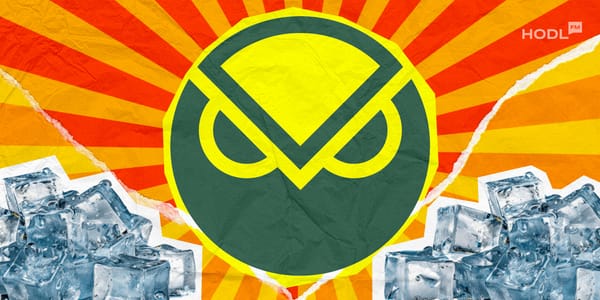Welcome to the ultimate guide on how to get these two crazy kids, Web3 and TradFi, to finally shake hands and makeup
What we have here:
- Web3 and TradFi putting aside their differences and transforming finance.
- Sort of turning your WW2 antique vase collectible into a digital token that anyone could trade on the blockchain.
- Solutions for improving traditional finance products and merging them with Web 3.0. Sort of a unique revolution with less bloodshed (hopefully).
- And finally, we’re going to learn from Web2’s mistakes. Yeah, we’re looking at you, social media. Let’s not repeat those same mistakes in the finance world, shall we?
If TradFi does not adopt Web3 (decentralized finance), Web3 will not be able to reach its full potential. It’s time for these two industries to come together and build a better financial system for everyone.
Traditional finance companies are aware of the rapid disruption brought about by decentralization. The only problem is they want to remain conservative, and still win the hearts of financial consumers. Is that even possible?
Somewhat, there is clarity of having done things in a particular way for years. This makes me understand their perspective, that perhaps change could be scary sometimes. However, it’s time to take a leap of faith by embracing the future of finance.
So, now here is how disruptors are bridging the gap between TradFi and Web 3.0. Let’s take a look at some solutions and tricks they are employing.
Real-world assets and tokenizing
If you want to win over those stuffy TradFi guys and bring them into the wonderful world of Web3, just tell them to start “tokenizing” their real-world assets.
That means they can take their fancy real estate, artwork, and other valuable knick-knacks and turn them into digital tokens that can be traded like baseball cards on the blockchain.
Who knew you could make finance so fun and futuristic?
Who needs to own a whole castle when you can own a fraction of it? Tokenizing real-world assets isn’t just for the rich and famous anymore, it’s for anyone with a few spare bucks and a dream.
Plus, with everything recorded on the blockchain, you can keep track of who owns what and where it’s been, just like a virtual museum catalogue. It’s like playing Monopoly, but with real money and cooler pieces.
Web 3.0 tech could boost existing TradFi products
Web3 solutions can improve current TradFi products in many ways. For example, stablecoins, which are cryptocurrencies pegged to the value of a stable asset, such as the US dollar, offer a more stable form of digital currency, which can be used for everyday transactions.
Decentralized exchanges (DEXs) offer a more secure and transparent way to trade cryptocurrencies. Unlike centralized exchanges, which hold users‘ funds in custody, DEXs allow users to trade directly from their wallets, eliminating the risk of exit scams, rug pulls and exchange hacks.
Limitations of Web 3.0 that Web 2.0 could learn from
Web3 may be the new kid on the block, but it’s already struggling to keep up with the cool kids. It’s got problems, man. Like, it can only handle a limited number of transactions per second. Lame, right? But fear not, because the wise Web2 elders have some tips for making technology accessible and user-friendly. It’s like when your grandpa finally figured out how to use his flip phone – Web3 just needs a little guidance from its elders.
But seriously, the industry can learn from its mistakes and start working on solutions. Like, what if we made a layer 2 scaling solution? State channels? Sidechains? That’s right, we’re talking next-level problem-solving here. Let’s make Web3 the coolest kid on the block, one transaction at a time.
In addition, Web3 can learn from Web2’s focus on user experience. Web2 companies have mastered the art of creating user-friendly interfaces that make their products accessible to diverse user demographics.
Web 3.0 can benefit from adopting a similar approach, which would simplify the user experience for non-tech-savvy users.
Why did TradFi firms cross to the other side of the road?
To pick a side.
And perhaps get to the other side of the blockchain.
Okay, I just gave you the worst joke ever. However, it illustrates an important point.
Web 3.0 and TradeFi may seem like opposing forces, but they both have something to offer. By working together, we can build a better financial system for everyone.
Bottomline
Alright, folks, it’s time to bring these two warring factions together like a dysfunctional family at Thanksgiving.
We need to bridge the gap between Web3 and TradFi if we want to take decentralized finance to the next level.
That means turning real-world assets into digital tokens, improving current TradFi products with Web3 magic, and taking some lessons from the elder statesmen of Web2. It’s like the high-budget Brady Bunch with fewer cheesy songs.
So come on, everyone, let’s put our differences aside and work towards a common goal – making finance accessible and awesome for everyone. If we can do that, we’ll be one step closer to a utopian society where money doesn’t rule all. Okay, maybe that’s a bit of a stretch, but you get the idea. Let’s get to work!



